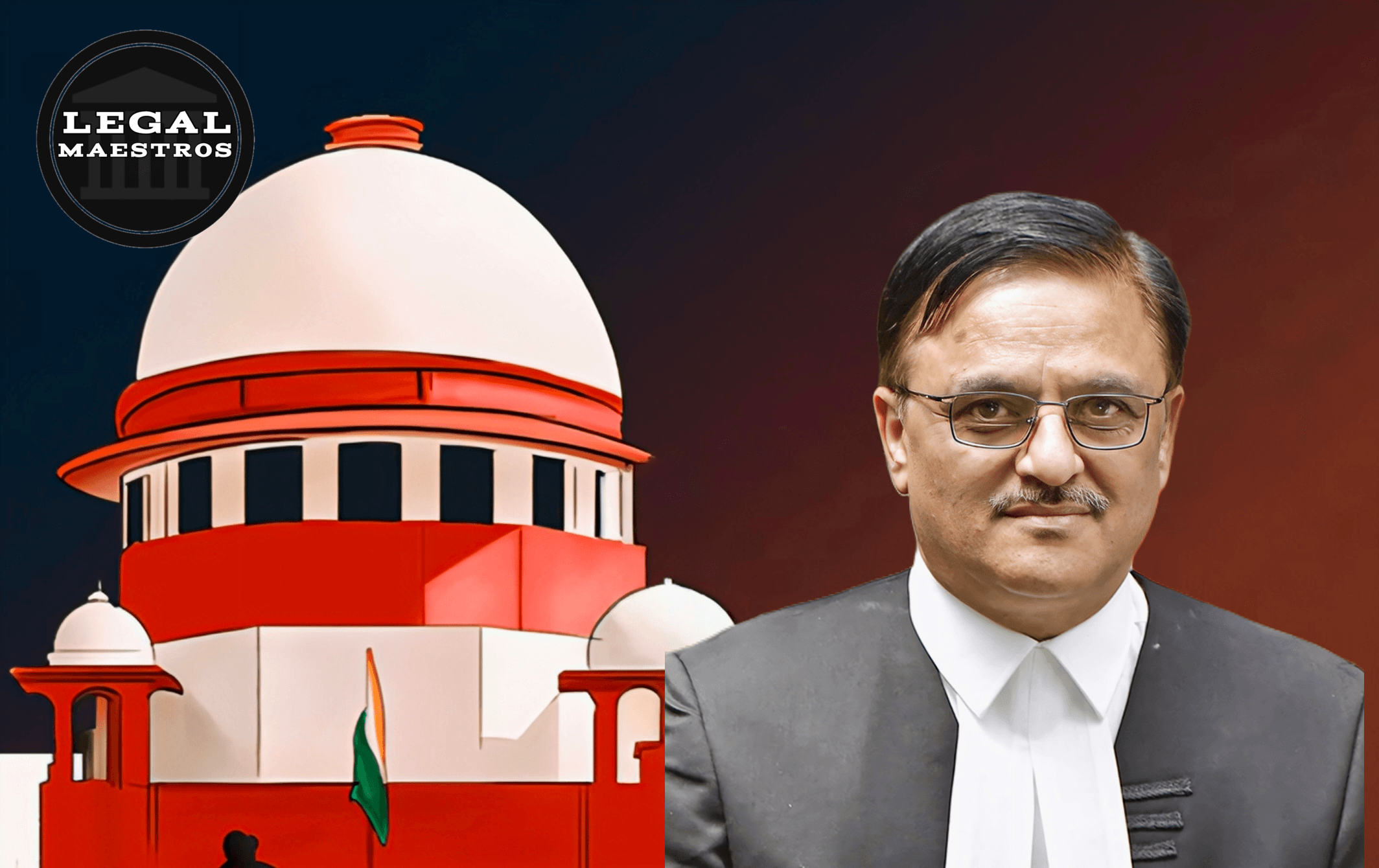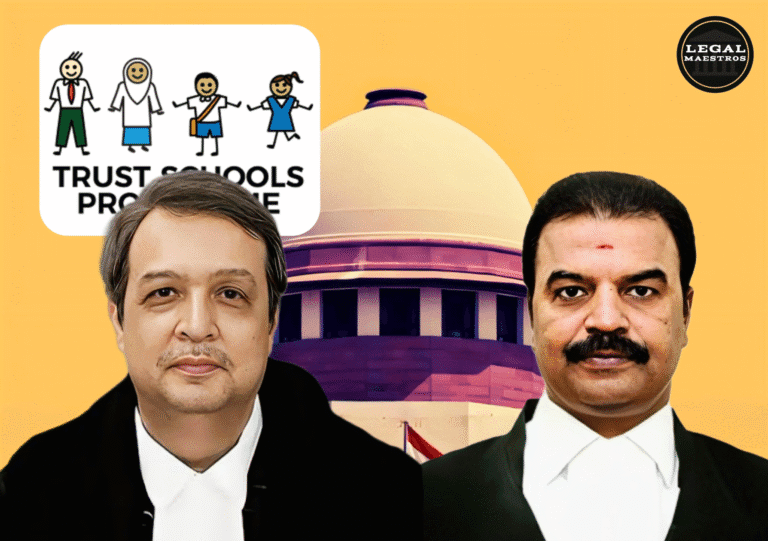
In a scary case of domestic abuse and suspected mass murder, the Supreme Court in Aejaz Ahmad Sheikh v. State of Uttar Pradesh brought up again how important it is to follow the rules of procedure exactly as they are written in Section 313 of the Criminal Procedure Code (CrPC).
The husband was found guilty and condemned to death for the horrible murders of a lady and her three kids, who were burned to death. He was not guilty as ruled by the High Court and the Supreme Court also ruled the same as criminal law requires the prosecution to avail the important evidence to the defendant.
In a Nutshell of the Case
This suit was as a result of such a horrific incident where Amina and her three daughters, Najma, Fatima, and Salma, were killed on December 26, 2008, after they were burnt to death during a fire in their residence. Aejaz Ahmad Sheikh (PW-1), brother of Amina said that Aminas husband Hasim Sheikh and his cousin Aslam doused the victims in kerosene and set fire on them.
For any queries or to publish an article or post or advertisement on our platform, do call at +91 6377460764 or email us at contact@legalmaestros.com.
Najma died right away, but other others died later. Amina and Fatima made deathbed statements that blamed Hasim. Aslam and Hasim both got burns, and Aslam died a few days later.
The Trial Court accepted the dying statements and evidence of the little son, PW-5 Kamar Hasim, and found Hasim guilty under Section 302 IPC, giving him the death punishment. The High Court, on the other hand, identified problems with the way things were done, especially with Section 313 of the Criminal Procedure Code, and let the accused go. The complainant and the State both filed appeals at the Supreme Court.
Why Section 313 CrPC Is Important
Under the Criminal proceeding code, 313, the accused should be allowed to propose an explanation to any evidence that appears to weigh against him after the prosecution has discharged its case.
For any queries or to publish an article or post or advertisement on our platform, do call at +91 6377460764 or email us at contact@legalmaestros.com.
Such a rule ensures the trial remains impartial and the accused does not find himself guilty without being given a chance to express himself concerning all the crucial issues.
According to the Supreme Court in this case, the most crucial evidence against the defendant which are the deathbed statements were not even presented to him at the time of the Section 313 investigation.
The evidence by Amina and Fatima turned out to be highly critical to the case of the prosecution but the accused do not have the opportunity to admit, deny, or clarify the same.
For any queries or to publish an article or post or advertisement on our platform, do call at +91 6377460764 or email us at contact@legalmaestros.com.
The Court said that leaving out this information was against the rules of natural justice and hurt the accused, thus these remarks could not be utilized to convict.
Vulnerability of the Minor Witness
The evidence of the accused’s little son, PW-5, who said he saw the crime happen, was another important part of the case.
The Supreme Court said that juvenile witnesses are allowed under the Indian Evidence Act, but the Trial Court must first make sure that they can comprehend and answer questions. No one paid any attention to this verification procedure.
For any queries or to publish an article or post or advertisement on our platform, do call at +91 6377460764 or email us at contact@legalmaestros.com.
The boy story also had a lot of inconsistencies. The report he had made to the police did not match up with what he talked before the court.
As an example, he initially told he did not know how the fire started, but later on told that he saw his father and others start it. These contradictions made his story less reliable.
Medical Evidence and Things That Don’t Make Sense
The Supreme Court also mentioned other important things that made people hesitate. Aslam, the other person charged with the crime, also died from burn injuries, and the accused had 20% burns. The prosecution didn’t do a good job of explaining these facts. If the accused and co-accused really did light other people on fire and get away, their injuries should have been minor.
For any queries or to publish an article or post or advertisement on our platform, do call at +91 6377460764 or email us at contact@legalmaestros.com.
The severity of their injuries made it seem like they could have been there during the fire in a different way, maybe even attempting to assist.
This difference, together with the absence of solid evidence to back it up, made the prosecution’s case much weaker.
The High Court’s Reasoning and the Supreme Court’s Decision
The Supreme Court did not concur with everything said by the High Court but it could not see anything wrong with the ultimate judgment.
For any queries or to publish an article or post or advertisement on our platform, do call at +91 6377460764 or email us at contact@legalmaestros.com.
The appeal court stated that regardless of whether evidence could have been viewed differently, there had to be something wrong and unreasonable with it in order to overturn an acquittal.
The Court considered that it would not be right to remand the case to correct defects in procedures because this took so long ago over 14 years.
The person who was charged had been in prison for more than six years, knowing that they may get the death penalty. So, it would be unreasonable to reopen the case only to look at him again under Section 313.
For any queries or to publish an article or post or advertisement on our platform, do call at +91 6377460764 or email us at contact@legalmaestros.com.
More General Suggestions from the Court
The Court issued important comments concerning problems with the system. It advised that trial judges get help from prosecutors and defense lawyers when they write questions under Section 313. Also, appellate courts should check for conformity with Section 313 as soon as possible to avoid these kinds of unfair mistakes.
They are only allowed to order new questioning or refer the case back to the lower court, however, when it is done in a rush.
The ruling serves as a reminder on the significance of having a just process in criminal trials. The Court would never surrender the rights of the accused, despite the fact that the case involved some atrocious deaths and strong emotional contexts. The ruling serves as a lesson to all the stakeholders that the criminal justice system must be both just and fair.
For any queries or to publish an article or post or advertisement on our platform, do call at +91 6377460764 or email us at contact@legalmaestros.com.




![Research Assistantship @ Sahibnoor Singh Sindhu, [Remote; Stipend of Rs. 7.5k; Dec 2025 & Jan 2026]: Apply by Nov 14, 2025!](https://legalmaestros.com/wp-content/uploads/2025/11/Gemini_Generated_Image_s0k4u6s0k4u6s0k4-768x707.png)
![Karanjawala & Co Hiring Freshers for Legal Counsel [Immediate Joining; Full Time Position in Delhi]: Apply Now!](https://legalmaestros.com/wp-content/uploads/2025/11/Gemini_Generated_Image_52f8mg52f8mg52f8-768x711.png)
![Part-Time Legal Associate / Legal Intern @ Juris at Work [Remote]: Apply Now!](https://legalmaestros.com/wp-content/uploads/2025/11/ChatGPT-Image-Nov-12-2025-08_08_41-PM-768x768.png)
![JOB POST: Legal Content Manager at Lawctopus [3-7 Years PQE; Salary Upto Rs. 70k; Remote]: Rolling Applications!](https://legalmaestros.com/wp-content/uploads/2025/11/ChatGPT-Image-Nov-12-2025-08_01_56-PM-768x768.png)